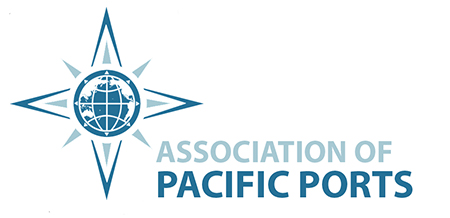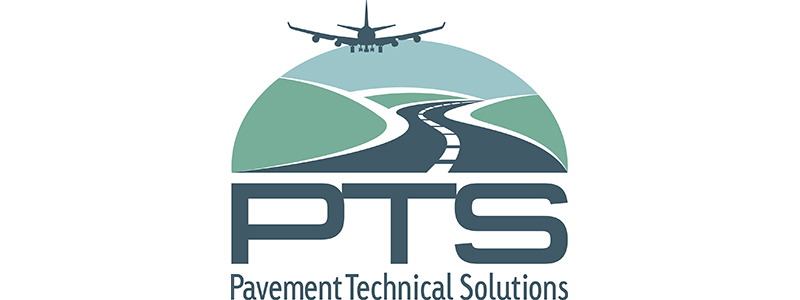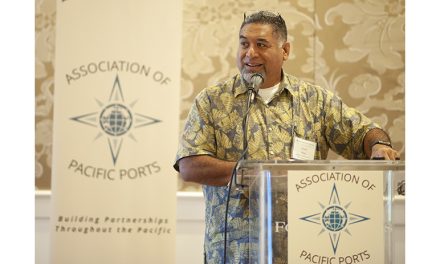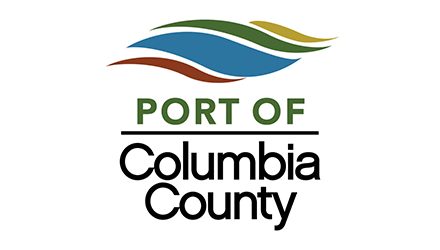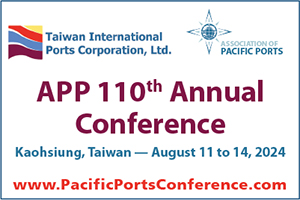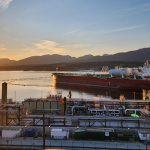The Association of Pacific Ports is pleased to welcome Pavement Technical Solutions, Inc. (PTS) as our newest Associate Member. Established in 2010 by President Brian J. Orandello, PTS is a full-service pavement engineering, management, inspection, testing, and evaluation firm known for its ability to provide innovative engineering solutions to a diverse array of clients around the world. In speaking with Vice President Rob Dodson, APP was impressed with the breadth of knowledge, expertise, and professional approach to developing cost effective solutions for their clients.
While the main office for PTS is located in Ashburn, Virginia, with another office in West Virginia and one in Hawaii, staff are spread out across the U.S. “When we find the right person, we’re not as concerned about having them get to an office as we are with their skills,” said Dodson, noting that the international nature of the business will usually take them to destinations all over the world, including Japan, Guam, the Bahamas, Cayman Islands, Trinidad, Northern Marianas, and, of course, many locations in the U.S.
Combined, the core PTS team has over 200 years of experience. Orandello has a 28-year track record of successfully managing projects – from conceptualization to completion – focused on airports, seaports, roadways, and military and government installations. Likewise, Dodson is a highly successful Geotechnical and Pavement Engineer with over 28 years of experience in project management; preparation of technical and geotechnical reports; field surveillance of subsurface exploration programs for a range of transportation projects; materials testing and evaluation; utilization of geotechnical instrumentation and monitoring programs; analysis of subsurface conditions; development of recommendations for both shallow and deep foundations; landslide remediation; and more. Staff under Orandello and Dodson are equally skilled.
At the core of PTS’ services is pavement evaluation and engineering. “This is our primary niche market,” said Dodson, “but we offer a range of other services to allow clients to optimize the decision-making process on rehabilitation and repair options, maintenance, and associated costs to maximize their available resources.” Indeed, Dodson was quick to point out that pavement is just like any other asset that requires monitoring and planning preventative maintenance and rehabilitations. “Having a monitoring cycle in place helps to avoid surprises. Undertaking regular maintenance and keeping track of the pavement network condition so that a small problem doesn’t become a big one and having that built into annual budgets is a smart management decision that will stretch out the life of the pavement.”
Using one of their larger, on-going projects as an example – the U.S. Army Garrison in Oahu, Hawaii – Dodson and the PTS team have spent the last 20 years providing pavement management services that cover 14 different installations with 600 lane miles of pavement. “While ports and terminals might not have the same straight mileage, they still must maintain thousands to millions of square footage of pavement,” he said, adding that the daily traffic of heavy trucks, reach stackers, and rubber tire gantry cranes place significant loads on the pavement.
When asked about trends in technology that might benefit pavement management, Dodson noted that, while video/drone inspection and digital imagery is continually being refined and can provide some cost benefits in the right situations, manual “boots on the ground” inspections are the best option for terminals and airports. “For a container port, for example, there’s so much going on – different types of equipment and vehicles, and different schedules for various areas – that manual inspections are still the best options for pavement management.” He did point out that GIS mapping to allow a client to point and click on a section of the facility was useful in determining future needs. “Through regular monitoring, we’re able to determine and anticipate future needs,” he said. “This is key to ensuring that there will be a budget in place when it’s needed.”
Another aspect of pavement management that the PTS team considers when planning out a project is the type of material to use. “There are some methods to toughen industrial pavements, for example, adding metal fibers to concrete,” Dodson said. “especially for areas where heavy tracked equipment is frequently used.” He went on to say that PTS is continually tasked with developing strategies and recommendations that require creative solutions. “No two facilities and their operations are the same and each project requires us to carefully evaluate, design and provide the most effective option that will meet our clients’ needs.”
And whether the project involves coastal or inland terminals, airports, or heavy industrial facilities PTS brings the same level of critical thinking and high-quality results to all jobs. “We’re a small niche, very specialized company that prides itself in the level of service we provide to our clients who call on us for both long-term and short-term needs,” Dodson said.
For more information about Pavement Technical Solutions, their services, and their experience with many different types of projects, visit: www.pavementtechsolutions.com.
